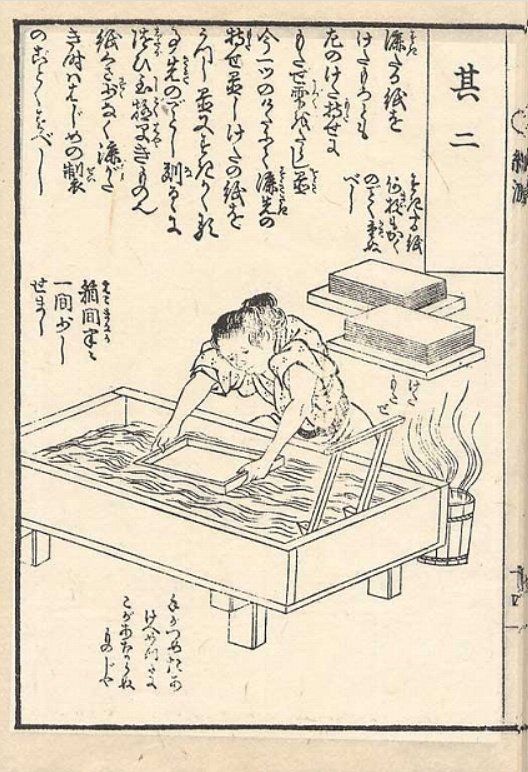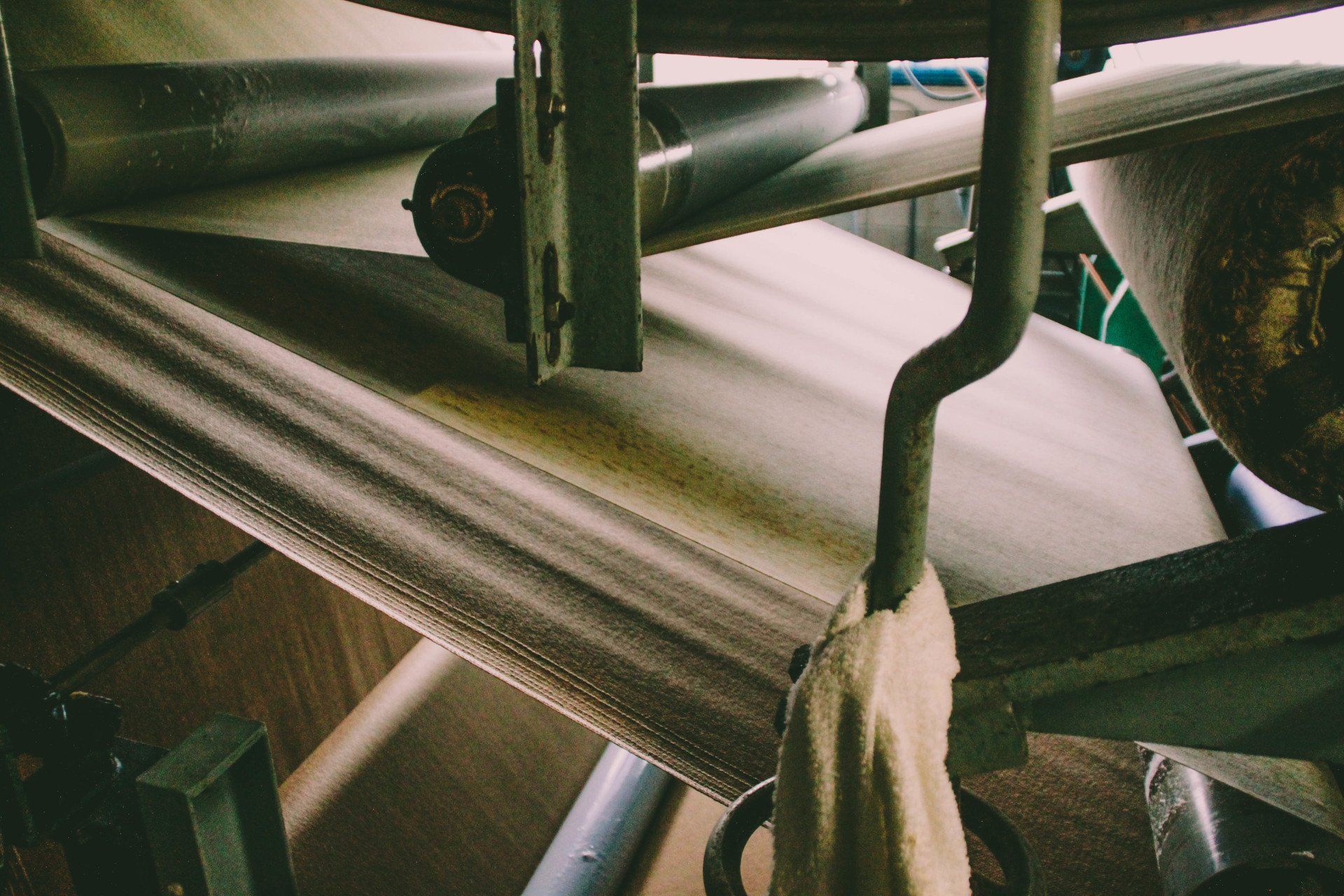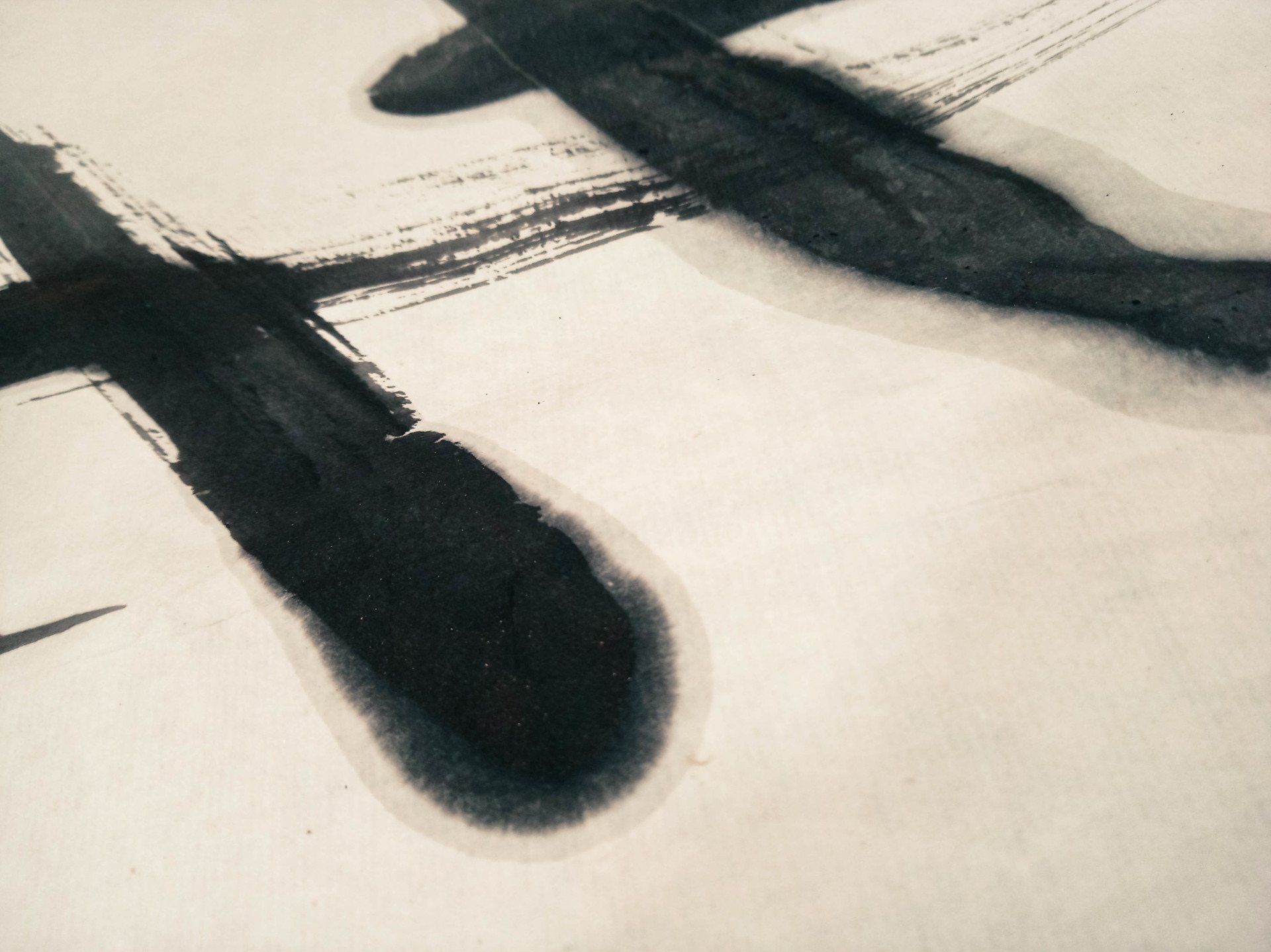Paper
- What paper do I use?
This is one of the most frequently asked questions in Japanese painting and calligraphy classes. We answer the question:
- It depends. What do you expect from the role?
The question usually opens a space for conversation about paper, which is one of the “Four Treasures of Study” of Shodo and Sumi-e and due to its importance in learning we will write some key aspects below.
The paper used in the Eastern pictorial and calligraphic tradition, known generically in the West as “rice paper”, is a technically incorrect name. For this reason, we prefer to call it – more accurately in terms of nomenclature – handmade paper made from vegetable fibers.
Two of the types of paper most used by us and by our students of Japanese painting and calligraphy are Xuan 宣纸 from China and Washi 和紙 from Japan, both of which are generic names since within each of them there is a range of varieties.
Both are mostly handmade papers and differ from each other in their raw material, in the type of water used, in some aspects in their manufacturing process and consequently in their behavior when they come into contact with ink.
In the case of Washi paper, which has been designated a World Heritage Site due to its cultural importance, three types of plants are mainly used:
- KOUZO 楮, or “Broussonetia Papyrifera”, a type of mulberry tree.
- GANPI 雁皮, “Diplomorpha Sikokiana, which is a Japanese shrub of very fragile cultivation.
- MITSUMATA 三椏, “Edgeworthia Chrysantha”, commonly known as paper bush.
Washi paper was first produced in Japan in the early Meiji era (1868 - 1912) and is made up of two kanji. The second kanji 紙 (kami or shi) means paper and the first kanji 和 (wa), besides meaning "harmony", is used to designate that which is unique to Japan and thus be able to differentiate it from other papers from other geographies.
On the other hand, Xuan paper takes its name from a district of the city of Xuancheng 宣城, called Xuan Zhou 宣州 and its origin dates back to the Tang Dynasty (618 – 907). It is mainly made from mulberry bark, but we can also find it from cherry tree bark, sandalwood or bamboo, among others.
An important aspect for our practices is that, depending on the treatment they receive, in some of these papers the surfaces appear almost without variation on the front and back of the support, in others the surfaces appear with a variation, on one side smoother and on the other rougher or rugged, the latter being more sensitive to the registration of the greys of the ink, but less exact in the drawing of lines.
Although papermaking in Japan was introduced by a Korean monk in 610 AD, it was not until the end of the Meiji Era that machines for making Washi (kikai-suki機械漉き) were created, always trying to produce a paper as similar as possible to that made by hand. Nowadays, the production of Washi by hand is very limited, and, consequently, the prices are very high.
Due to their great resistance to climatic changes, the passage of time, their beauty, resistance and versatility, these handmade papers made from vegetable fibers are mainly used for calligraphy and painting, but also to make blinds, lamps, umbrellas, clothing, sliding doors and windows.
The production process of Xuan paper is also very demanding and requires many highly specialized stages. In particular, the filtering and drying process requires the work of highly qualified people to ensure the preservation of the unique characteristics of Xuan paper.
There are many types of Xuan paper, but we will highlight here a classification that refers to the type of procedure of the ingredients used. In this way, we will have three characteristics to consider at the time of practice:
- XUAN crudo (Shengxuan)
Its surface is slightly irregular and this helps the work of spreading the stain, resulting in more irregular edges and more uncontrollable behaviour. On this paper, the brush must be moved quickly and with little pressure.
- Ripened or cooked XUAN (Shuxuan 熟宣)
It is covered with potassium alum, which provides a somewhat smoother surface than the previous one and allows for the drawing of more defined lines.
- XUAN semi-cocido (Banshuxuan)
It has a smooth surface that allows the ink to "float" before it is slowly absorbed. It is highly recommended for precision writing or line style painting.
In both Xuan and Washi paper we can find a wide range of shades that go from the purest white to yellows close to ochre. This wide range depends, among other things, on the type of raw material, the fiber washing process and, in many cases, on specific pigments that can be added either individually to each sheet or in an industrialized production process.
It is important to clarify that these subtle variations in white color (to which the eye is gradually trained) are easier to perceive when we have different pieces of paper on our work table and we test on them the behavior sometimes of the ink and other times of the ink and water.
Texture is a quality of this medium that we can appreciate through touch. Touching paper is an experience that we appreciate the more we repeat it. Especially if we take into account that touch is a bidirectional sense: while we touch the paper, the paper touches us.
Our master Hikita Masao “Sekiin” also tells us how paper tells him about its qualities through listening. When he visits factories, he passes his hand over the surface of each sheet of paper with his eyes closed, inviting his ear to obtain the best information about them through this means. He then crosses two strokes of ink and observes the results.
So far we have talked about paper in its pure state. But what happens when the brush is placed on this surface with ink or ink and water? How does it work with liquid ink? What are the edges of the stain when we use stick ink? What shades of black does the ink reach? What expressive possibilities arise when I incorporate a little speed into the stroke? What pressure does the brush need to apply on the screen to obtain a reserve zone? How does the same stroke vary on paper of the same type but with different thicknesses?
And with different plots?
These and other questions are answered by practicing the art of brushwork. In order to choose a paper, we must first paint and write on it and thus have knowledge of the behaviour of the ink in each case and know its features based on direct experience and not on information from catalogues.
The answer to the initial question about which paper to use is not unique, but multidirectional. It requires research that we must undertake to find our own answers. We have been on this path for more than ten years, we can accompany and advise you on this, that is what we are here for.
Throughout all these years we have fallen in love with paper and it has opened up a world of expressive possibilities for us in both Sumi-e and Shodo.
And while we gradually share more about this “treasure” through these articles and during our classes, we encourage you to also enjoy this process of discovery and knowledge of ink on paper.
Luciana Rago and Elena Hikari








